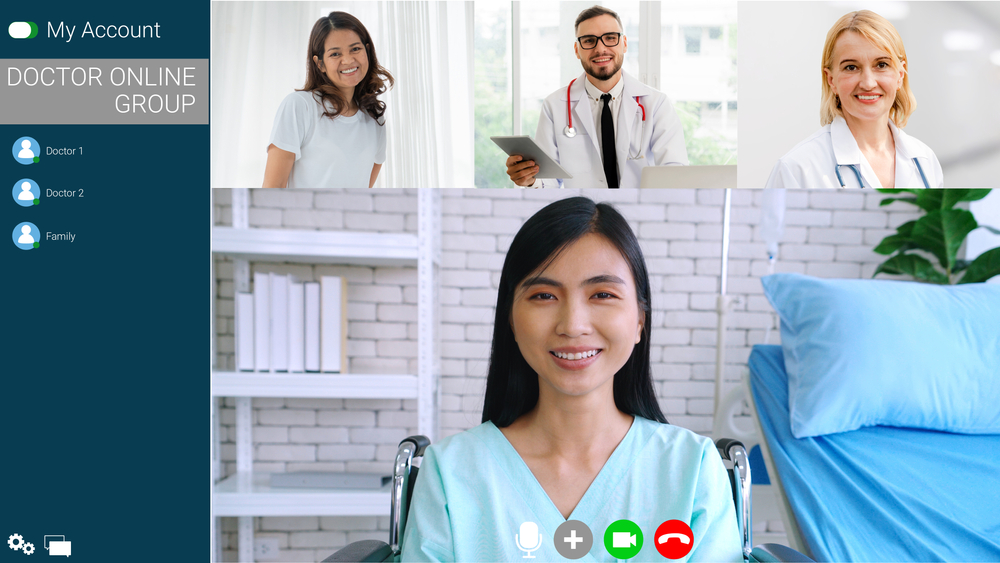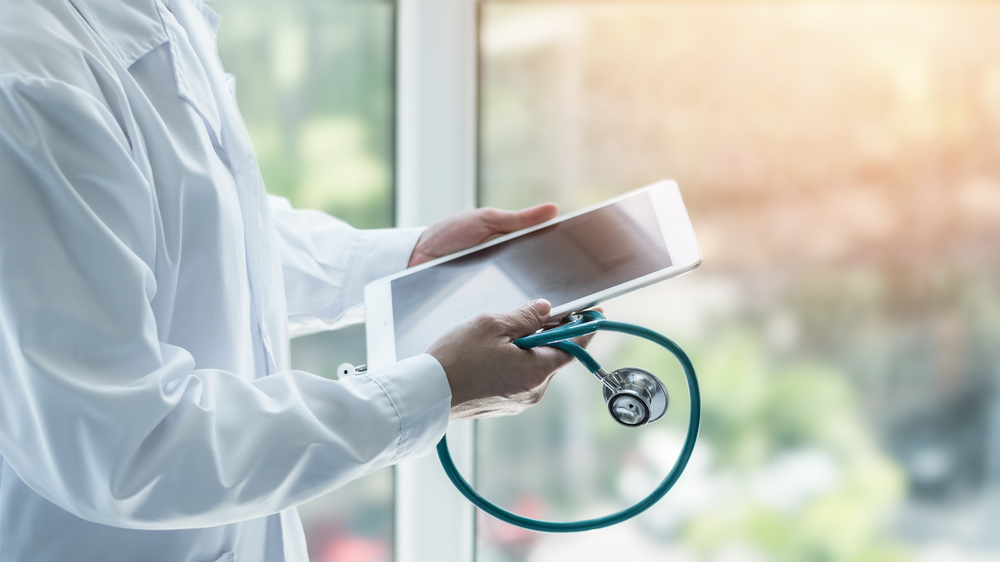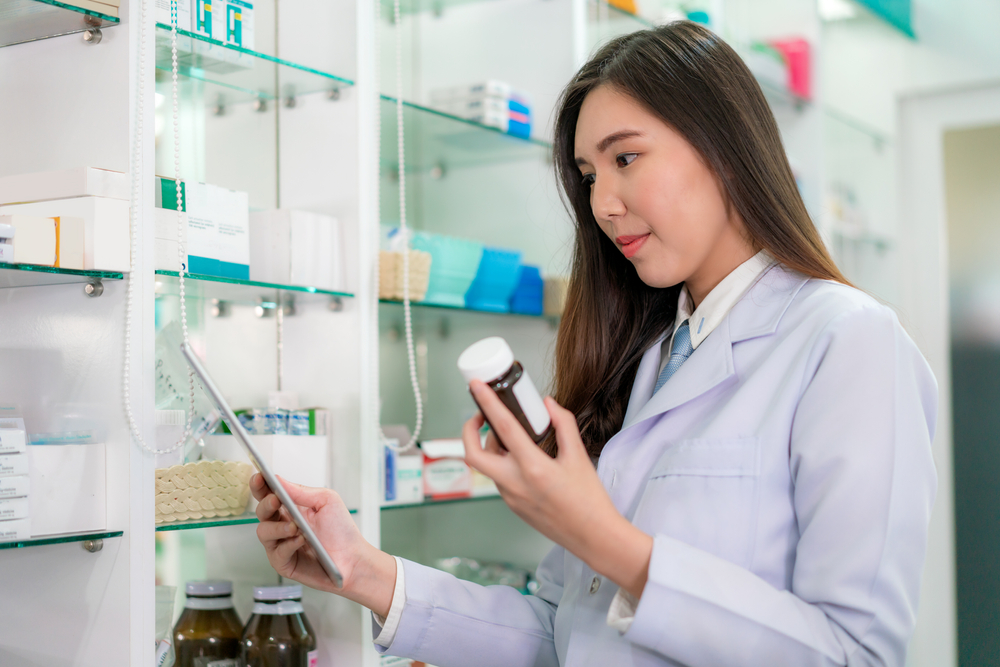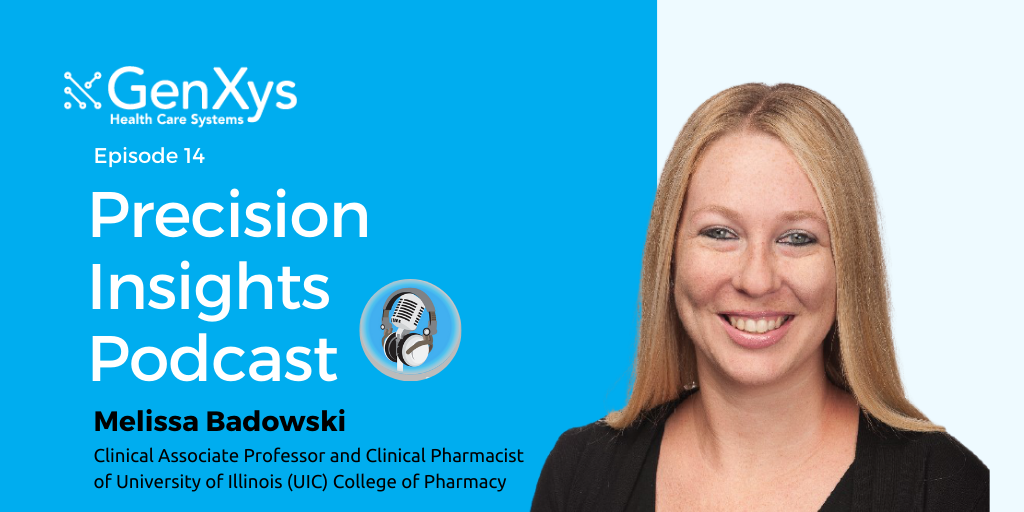
Melissa Badowski is a Clinical Associate Professor and Clinical Pharmacist in HIV telemedicine at the University of Illinois and Chicago College of Pharmacy. Dr. Badowski manages patients with HIV in the Illinois department of corrections through telemedicine services, as well as in the outpatient setting and through transitions in care.
Her specialties and research interests include HIV and infectious diseases and she is the founding chair of the American College of Clinical Pharmacists, HIV Practice and Research Network.
Melissa’s inter-professional care team provides telemedicine care including comprehensive medication management services to inmates through 26 prisons and drug treatment centers in the state of Illinois for individuals living with HIV.
Comprehensive Medication Management in Team-Based Care
We’re seeing more of a focus in pharmacy on being able to provide one-on-one time. Clinical pharmacists are able to provide that individualized care and set individual goals for patients. One way that they’re able to do this is through comprehensive medication management.
So what is Comprehensive Medication Management (CMM)?
Providing comprehensive medication management (CMM) involves several components, including working with a patient to see what prevents them from taking every medicine as prescribed. It’s not just looking at one of the medications, but every medicine a patient is taking, whether it’s behind the counter of a pharmacy or over the counter. The patient should understand how to take the medicine and why they should take it every day.
Each person on Melissa’s interprofessional care team has a specific role and expertise. Everyone on the team is on the same telehealth call at the same time: the physician, the pharmacist, the case manager, the nurse, and the patient.
The physician is the expert in diagnosing and treating a patient, and the nurse is with the patient at the prison to ensure that, amongst other things, the prescribers medication orders and laboratory testing recommendations are carried out. There’s also a case manager/social worker who assists in scheduling medical follow ups upon release from prison, and starts the process for medical and prescription insurance coverage.
The clinical pharmacist provides CMM: they ensure that the patient is receiving the optimal medication or therapy while reducing their risk of side effects or drug interactions. They also make sure that the patient isn’t taking unnecessary or duplicate medications and that the patient understands what their medications are and how to take them. For every medication, they go through why the patient is taking them and alerts them of any major side effects or potential drug interactions.
If you’re working together and you’re communicating with each other, it’s a win for the patient, especially when it comes to CMM. Interprofessional, team-based care is set to expand even further. There are many projects where students are starting to work with other healthcare professions as soon as they come into pharmacy school. We’re on the brink of it becoming the standard of care.
From Telehealth before COVID to Telehealth After COVID

Telehealth doesn’t work so well if you need to have that extensive physical exam. If you need to check their range of motion or anything like that, that would be a telehealth limitation. You generally need to have that first visit and see them face to face to set a baseline. Following up via telehealth, you’re seeing if it’s improved. Because of the pandemic, there has been an expansion in what can be done via telehealth; there have even been physical therapists who have been able to perform telehealth. This has been possible not only because they had to figure out how to adapt their practice to the technology, but also due to a relaxation of the reimbursement rules.
Because of the pandemic, coverage for telehealth services has been way more flexible. While the same flexibility might not still be there moving forward, it’s going to allow more patients to engage in telehealth. If a patient wasn’t comfortable with participating in a telehealth visit before, they tend to be now because they’ve had a visit or two under their belt, and they are more willing to adapt to the technology. It’s also allowed Melissa’s team to reach more patients than they would’ve ordinarily been able to.
What will stay the same is having a lot of telehealth visits. At Melissa’s own clinic in the outpatient setting, they were not doing telehealth clinics prior to the pandemic. Now, they are the norm and they are only bringing patients in if they need to have a physical exam or for certain laboratory follow ups. A lot of this will likely stay the same. Hopefully, what will also remain is the coverage and reimbursement for telehealth visits.
(Related Post: The Impact of Telemedicine in Healthcare: Before and After COVID-19)
Introducing Telehealth Medication Management: CMM+Telehealth

Melissa’s team does CMM through telehealth, but what can other practitioners do to be successful at this practice? As with other types of primary care consults (excluding physical exams or certain laboratory follow ups), CMM through telehealth is possible as long as you have good internet connections and video capabilities. With practice and attention, it’s even possible to pick up on non-verbal cues through telehealth.
Because you can still see their expressions and body language, you can see when a patient is uncomfortable or when they’re upset by something. If they’re not meeting their goals of therapy, you can see that too.
There’s a few examples of non-verbal cues; one is that when a patient is uncomfortable, they might start fidgeting back and forth in their chair.
There are some ways to make sure you’re getting the most accurate answers to your questions. Patients should be asked open-ended questions rather than just simple “yes” or “no” questions. If you ask a nurse and a patient what the patient’s medication list is, they might give different answers, and that’s something that needs to be resolved. You need to know whether or not the patient is actually taking what’s on that medication list. You might ask how many doses they’ve missed in the past month, and they might not necessarily be entirely accurate when they first answer. Then, you can get more precise with follow up questions; how many they’ve missed in the past week, two weeks, etc. If they’re not taking their medications as prescribed, you can ask about side effects, maybe list some that might be occurring.
(Related Post: Medication Adherence: How to Stay On Track)
Working with a patient to create a plan that effectively treats their condition while minimizing unwanted side effects and interactions is only possible with a good understanding of what barriers a patient is facing when it comes to taking their medications. This requires the ability to read their non-verbal cues; luckily, this can be done if video calls work, making CMM a viable service to provide through telehealth.
Barriers to effective CMM and the future
With CMM, you look at the whole picture, because there are certain medications that can interact and cause unwanted side effects. Sometimes other prescribers don’t pay attention to, or maybe aren’t aware of, these drug-drug interactions. If the patient’s medications were just reviewed, it might take three to four months until the patient receives CMM again; they might have to experience the effects if a prescriber adds a medication that interacts with one or more of their existing drugs.
There’s not a lot of data about CMM specifically for telehealth. It will be exciting when more data and results come out.. The field of CMM is always looking at the opportunities to evolve. How can medication management be optimized so that the patient actually meets their therapeutic goals and improves their quality of life?
Conclusion
Comprehensive medication management is an important and exciting way for pharmacists to put their expertise to use outside of a dispensing setting. It can have a real effect on patients’ lives. Telehealth has become pretty standard and continues to expand due to advances in technology and the circumstances of the COVID-19 pandemic. Melissa and her extraordinary team have shown that these two things can be put together for effective and efficient results.
Thank you to Melissa Badowski for joining us on Precision Insights!

About Precision Insights Podcast
The Precision Insights podcast is a podcast series consisting of inspiring conversations around precision medicine with industry thought leaders and innovators. Every month, we share the most cutting-edge technologies, processes, and initiatives in precision medicine. If you’re a patient, healthcare provider, healthcare executive, employer, or someone simply interested in precision healthcare, you’re sure to find something useful in each episode. We hope that you’ll join our listeners and start taking control of your health, or implement precision health into your organization/clinical practice as a result!
The Precision Insights Podcast is proudly made by the GenXys team. Feel free to get in touch with us, we would love to hear your feedback, ideas, or thoughts.